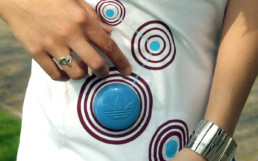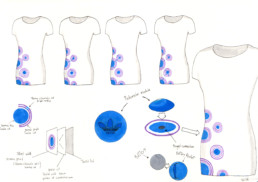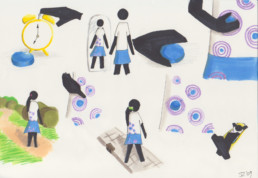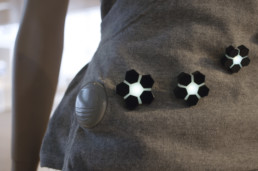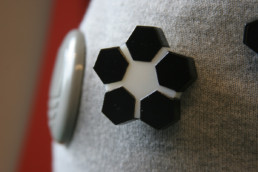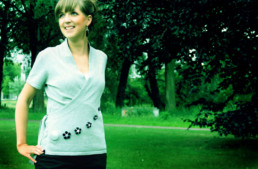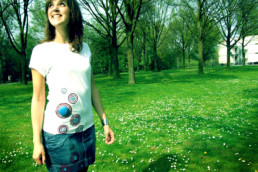Objective
My first master project was for the Adidas Innovation Team. The objective of the project was to inspire the team with new concepts using a combination of electronics with textiles. The project took place in 2008 and this subject was quite new and unexplored yet. The first iteration of Walk! was such a succes with the Adidas Innovation Team that I was asked to do a second project. Both iterations were presented during the Dutch Design week of 2009 and got media attention in different places e.g. the design magazine 'Items'.
IDEA GENERATION | ARTIST IMPRESSIONS | ANIMATION & VIDEO | PROOF OF CONCEPT PROTOTYPING
VALUE PROPOSITIONING | PROTOTYPING & TESTING | USER SCENARIOS | PRESENTATION
Approach
Idea Generation
At that time the pedometer was a popular way to track your activity to see if you have a healthy and active lifestyle. I took this measuring tool as a starting point to see if I could make it more engaging and motivating to use by how the information is communicated to its user. I did several experiments with different materials that have changing capabilities. One of them was thermochromatic ink, which is ink that is a different color at different temperatures.
Prototyping + Testing
Several smaller prototypes were made with the thermocromatic ink to find a good way to control the color shift that could also be integrated in a piece of clothing. Using the resistance of conductive yarn to warm-up the ink worked very well. Heating the conductive yarn costs quite some power and therefore i wanted to use as few as possible. I designed a pattern that had the biggest visual change with the smallest changes in the pattern itself. The pattern was then silk-screen printed on an existing shirt.
The pedometermodule consists out of an arduino and the mechanical workings of an existing pedometer. I made a 3D-model of the casing and used a SLA 3D-printer to print it. 3D-printing was quite new and it took a lot of sanding to get to a nice result.
User Interviews
In the second iteration the created Walk! shirt was used in user interviews with several women. The idea was to get a genuine reaction to the concept and therefore there had to be a high quality prototype. Most women would wear the shirt, but not to work because it was too casual. Privacy was more important to them when they where at work and showing the progress of your goals all the time was seen as to invading.
Prototyping & Testing
A more formal piece of clothing was chosen for the second version that enabled the user to hide or show their progress by the way it was worn. To be able to see your progress with less light the thermocromatic ink was switched with LED modules.

